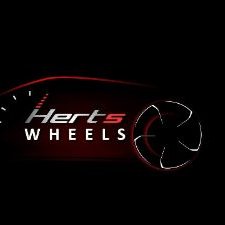Existing Limitations To Which Alloy Wheels Can Be Refurbished
Refurbishment is different from manufacturing a new branded wheel. Thus, there will be limits to what will be achieved. Successfully refurbishing many wheels to high standards is possible and earns good feedback.
Nevertheless, for some wheels, refurbishment can be done but the wheels will not be close to their original appearance. A few wheels cannot be refurbished at all.
We shall look into the typical issues limiting what is possible and not possible to refurbish as it might even impact the ultimate appearance.
The General Guidelines on Alloy Wheel Refurbishment Services
The alloy wheels’ underlying quality determines the way the wheel refurbishment experts will handle and successfully resume the wheel closer to its original self. It is evident if any significant flaws are existing in the wheel then the better refurbishment will be limited.
Unfortunately, determining the success becomes a difficulty until the alloy wheel has undergone the chemical stripping process, and the bare metal is exposed for detailed technician inspection. Alloy wheel refurbishment services are done following the condition of the alloy wheels.
According to the rule, the older alloy wheels, the excessively corroded alloy wheels, and the alloy wheels welded previously will not receive a finish similar to their original appearance. Similarly, a few after-market alloy wheels challenge the wheel refurbishing technicians since, the wheel comes from a different manufacturer and they vary based on their original cast. Extremely brittle wheels or the ones having a soft alloy composition are indeed hard to be refurbished. Often the technicians inform they cannot proceed.

Diamond-Cut Wheels
The Total Number of Diamond Cuts in The Alloy Wheels

The number of times for the wheels to be diamond cut is even limited as each time this process is applied on the wheels, the cutting head on the lathe works to remove the thin metal layer from the wheels' face. In these instances, when the problems come up, then the American Nickel chrome paint finish is applied.
Edge De-Burring
The wheel spins at a higher speed on the lathe as the diamond cut process goes on. The diamond-tipped tool cutting the thin metal layer from the wheel slowly moves towards the wheels' face. As the wheel is spinning, it indicates the tool is first affecting the spoke's leading-edge and then cutting across the wheel surface, hence the spoke is left on the trailing edge. The Edge de-burring process creates a ragged and sharp edge on each spoke. Then the technicians then conduct the process for creating a tidy smooth edge that further results in a higher durable wheel finish.
Mapping Lines
Often highly colored lines termed as mapping lines will be seen on the spoke's edge on the wheel's face, post diamond cut. Diamond cutting results in such a consequence by eliminating small metal amounts from the wheels' face that exposes the underlying primer. The wheels' profile and the total times they underwent diamond cutting determines whether the mapping lines will be represented. The previous diamond cutting times accentuate the mapping lines' appearance. The skilled technicians attempt to minimize these mapping lines’ extent, even if they are not sure in advance about how much will the mapping lines be visible on the finished wheels.
Low Patterns
If the wheel area to be diamond cut is either low or uneven, that could be through the deliberate designs on the wheel manufacturer's part of having a previous diamond cut, then the badge details or the centre cap will normally sit with pride from the wheel. The low pattern consequence is unavoidable while the refurbishment is being done.
No Lacquer
With the refurbishment in need of diamond cutting of the older wheels, or excessively corroded wheel or the ones with poor quality casting, then the lacquering should not be chosen for the wheels, for achieving its best appearance. While its result should be the wheel finish looking better, but disadvantages are even associated with it. If the wheels are not given the protective coating, which the lacquering provides, then the wheel will need more care, maintenance, and cleaning than necessary.
Lathe Clamp Marks
Because of the high forces encountered during the diamond cut process, each wheel with a clamping mechanism, or lath jaws, is securely held. Thus, the wheels spin at a higher speed and are cut at the same time. The outcome is clamp marks will be visible on the wheels' back section where the lathe jaws had held the wheels. Without clamping the wheels in this procedure, diamond cutting the wheels is not possible.
Steel Wheels
The manufacturing way of the steel wheels often needs creating seams as a part of the process for wheel formation. You need to be aware this might result in bubbling effects surrounding any seam's area.
Lettering/Text/Details on Wheels
Sometimes wheels with fine details like patterns or texts are either raised above the wheel's surface or inset into its surface. You must be aware the patterns or texts could be lost during the alloy wheel refurbishment process because of paint or prime coverage as the finer details fall in the high and deep millimetre region and are not feasible for preventing paints and primers from obscuring the finer details. Magnesium wheels need regular extra paint coverage during refurbishment method because of the magnesium surface's nature, and this issue affects the wheels often.
Metal Valves and Tyre Pressure Sensors
The wheels having a metal valve and tyre pressure sensors, then they are generally removed and refit, only if they are not corroded.
Have you decided to refurbish your alloy wheels, then it is time to check with the alloy wheel refurbishment specialists? They shall inspect the condition of the wheels and then start the process. Being qualified in the trade, they are aware of the rules and regulations of the refurbishment process.





Comments